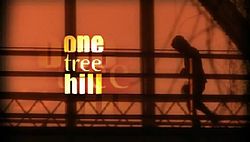Hello again! I already know what you’re thinking. You are probably waiting for me to discuss something I’ve learned about in my media criticism class but guess what? Today, I’m going to take a different path! I’m going to talk about what my classmates have learned in my media criticism class instead. I am going to go through three of my classmate’s blogs that stood out to me and explain what I enjoyed about their blog, what I learned from them, and what they could improve on. Basically, I’m going to give constructive criticism in my media criticism class.
First, I am going to start by analyzing Brianna Amoroso’s blog, “Lifting the Curtain on Disney”. Her link can be found here. http://briannacelesteamoroso.wordpress.com/
Brianna, I really enjoyed reading your blog on the ideologies we find in Disney movies. Your creative title, “Lifting the Curtain on Disney” is what caught my attention. Also, I found that your blog was set up in a fun and inviting manner that was welcoming to the reader. I like the way you placed pictures throughout your blog that went perfectly with what you were writing about.
Your blog on Disney reminded me of my blog on Disney because we made the same connections. For example, when you were talking about Disney’s depiction of gender roles and gender representation, you used examples that were similar to mine. You said that female roles tend to be portrayed as beautiful, skinny, and seductive. They bat their eyelashes and use their bodies to get what they want. I wrote about the same thing so I can definitely relate to what you were writing about!
You did a great job discussing how Disney represents women. This website is goes into further detail about how Disney characters don’t send the most realistic messages about life and love. http://madamenoire.com/82236/what-little-girls-learn-from-disney-princesses/ You could’ve went into further detail and used some of their examples but overall, you did a great job!
Also, I like how you discussed Disney’s way of representing different races and ethnicities. I didn’t write about that in my blog so I learned a lot while reading yours. You went into great detail about how the hyenas in Lion King were portrayed under a negative light with their dark fur, street slang, and Latino/African-American voices. I never thought about how Disney is exposing children to racism.
Overall your blog was very impressive but I think you could’ve added more of your own opinion. A lot of your ideas were straight from the movie or the lectures in class. When you used your own opinions, it was powerful and effective. Other than that, I think you did an amazing job and I am glad that your creative title lured me in to read your blog!
Next, I am going to be talking about blog assignment #2 written by Sarah Claus. Her blog can be found here. http://sarahclaus.wordpress.com/
Sarah, my eyes were immediately drawn to your blog about One Tree Hill because it is my favorite show, besides Breaking Bad, of course. You did a great job at introducing the show to your readers and explaining what One Tree Hill is all about. The two videos you showed in the beginning couldn’t have been more perfect. It is great that you showed the readers how different Lucas and Nathan were towards each other in the beginning compared to the end.
Then, you went on to explain how the aesthetic, ritual, and ideological approaches relate to One Tree Hill. Your example of how the aesthetic approach relates to One Tree Hill stood out to me the most. When you explained how One Tree Hill focuses heavily on music, I could definitely relate to that. One of the main reasons why I love this show so much is due to their choice of music. Here is a link you could’ve used to explain how important music is to One Tree Hill. http://www.oth-music.com/ Overall, you really showed that you understood the three approaches.
I also found it interesting when you said shows that depict teen life in a more realistic manner do not do as well. Personally, I like to watch shows that I can relate to. One Tree Hill was much more effective to watch since I could relate to their everyday life situations. When I watch Gossip Girl, it is hard for me to relate because I live such a different lifestyle than characters such as Blair. In my opinion, I think you should’ve given your opinion and said whether you would rather watch a show you can relate to or watch an unrealistic show. Other than that, you did a great job.
This was one of my favorite blogs to read because you gave so many personal examples. You did a wonderful job using examples we learned in class to further explain One Tree Hill. Keep up the good work, Sarah!
Lastly, I will be discussing Eric Arditti’s blog, “Breaking Down Breaking Bad.” His blog can be found here. http://ericarditti.wordpress.com/
Eric, your blog about Breaking Bad was one of my favorite blogs to read. Not only did you do a great job at explaining what Breaking Bad is all about, but you kept my attention the entire time. I can relate to the beginning of your blog when you say that you can’t get into a routine of sitting down every week and watching a television show. Breaking Bad is my one exception. It’s just so great!
You did a wonderful job at describing what Breaking Bad is all about to someone who may never have seen the show before. I loved the video clip you showed because my all-time favorite quote throughout the entire show was “A guy opens his door and you think that of me? No, I AM the one who knocks.” That was my favorite quote because it is so real and so powerful. Breaking Bad as a whole is such a powerful show so this quote just paves the way for what comes next.
I enjoyed the part of your blog where you described the visualist approach. You are correct when you say this show is very visually appealing and is known for using unique shots. As if this show isn’t unique enough already, some scenes start out with views from inside a microwave! It’s truly amazing.
In my opinion, I don’t think there’s anything you could’ve done to improve this blog. You did an amazing job at explaining the television show, relating it to concepts we’ve learned in class, and then giving your personal opinions and examples. Great job, Eric!
So what did I learn from critiquing my classmates blogs? Well, I’ve learned that an entire classroom of students can get assigned the same exact blog assignment, and there will always be different responses. After working hard on my own blog, it was amazing to read the exact same blog from the perspective of one of my classmates. It was interesting to find similarities in our writing styles but it was even more interesting to see the differences. I love the fact that we can all sit in class and listen to the same lecture but then walk out of class with different lessons learned. Overall, I had an amazing experience in this class. I’ve never written a blog before but it has truly taught me a lot. My writing skills and comfort level have grown tremendously and I am thankful I got the opportunity to improve!
























